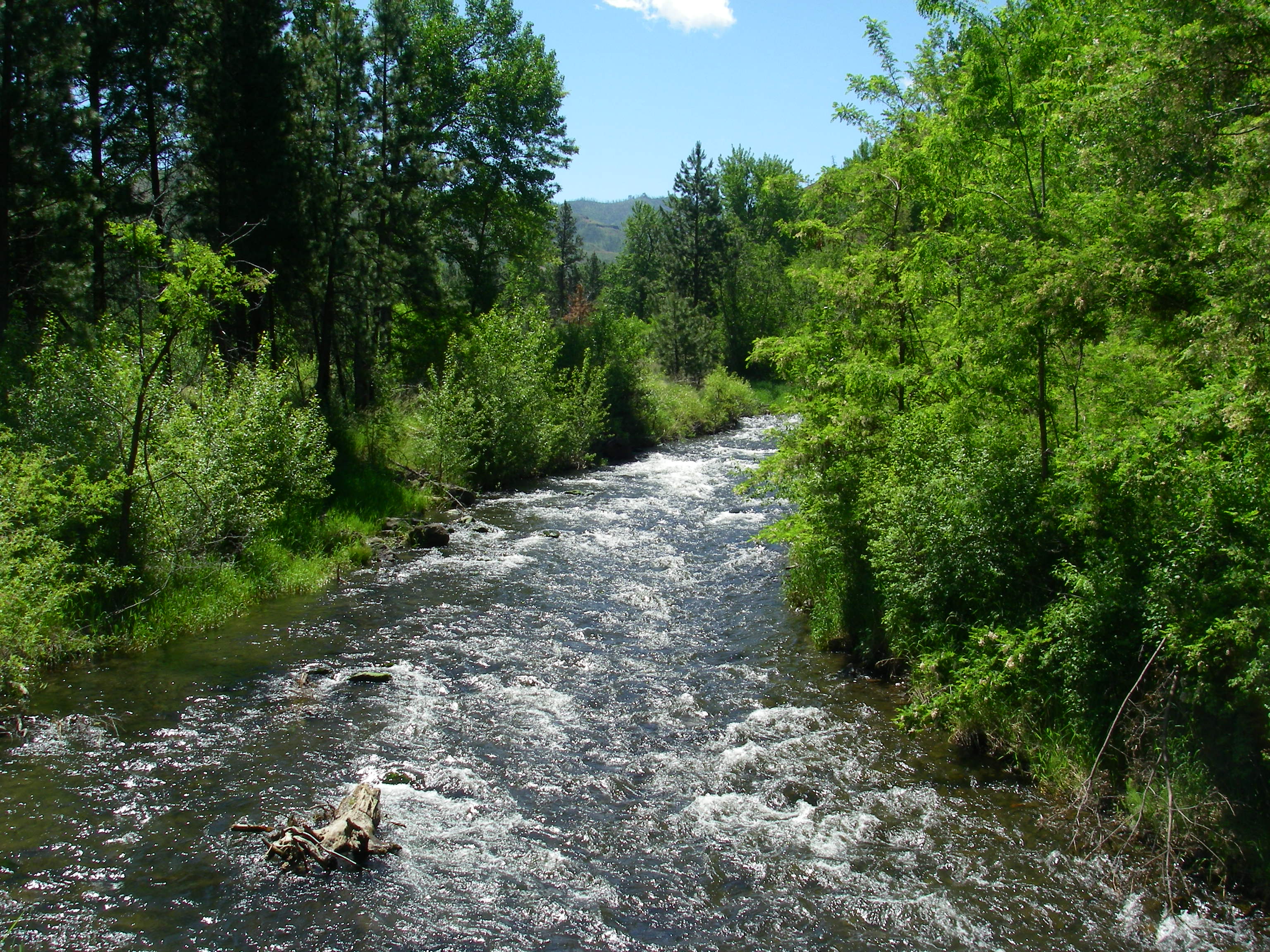
Fish Hatchery Bridge on Tucannon River
Last year’s drought saw the Walla Walla River at Touchet dry up again. The low-to-no flows in the river paint a vivid picture of what this watershed routinely faces from year to year. Community members, farmers, tribal members, cities, and industries on both sides of the Washington and Oregon border who call the watershed home are embarking on a new phase to bolster water supplies, now and in years to come.
Building on past efforts, the Walla Walla Basin Advisory Committee met virtually in late February to re-engage in their collaborative efforts. Last June, stakeholders moved forward a strategic plan that outlines guiding principles and prioritizes the desired future conditions needed for success in the basin.
“I am encouraged by the focused energy the Advisory Committee brought to the meeting,” said Brook Beeler, Ecology’s Eastern Regional Director. “We are all excited to dive back in, keep the momentum going, and find lasting water solutions for the Walla Walla River basin.”
Overlapping the states of Washington and Oregon, the Walla Walla basin is a complex watershed struggling to meet water needs for rural and urban growth and to maintain sufficient instream flows for fish. Because of this, the Walla Walla Water 2050 initiative was authorized by the Washington Legislature as an effort to improve streamflows and water supplies in the Walla Walla River basin over the next 30 years.
Key to the initiative is the over-arching commitment of the governments involved, which include the states of Washington, Oregon, and the Confederated Tribes of the Umatilla Indian Reservation. Navigating the regulatory frameworks of two states and including the sovereign rights of the Tribe are crucial for success.
Engaging the local and agricultural sector is also an important part of the process. Because of this, the initiative includes an Advisory Committee with representation from agriculture, environment, recreation/quality of life, economic development, local government, tribal government, federal and state government.
“Our efforts in the past left out crucial voices. I’m excited about the renewed energy and new members bringing broad perspective and input to the table,” said Chris Marks with the Confederated Tribes of the Umatilla Indian Reservation. “We’re eager to see these integrated strategies on the ground that will improve streamflows for fish without sacrificing other community interests such as secure drinking water and a vibrant agriculture economy.”
With the Legislature’s help, the initiative is moving into the next phase of the process. During phase two, the Advisory Committee will focus on identification of goals, implementation elements, and development of a governance structure to implement and guide water resource management in the basin through 2050. This includes identifying funding opportunities and developing legislative funding requests for projects consistent with strategies outlined in the plan.
Phase two will also include integration of the Bi-State Flow Study. The study aims to improve streamflow in the Walla Walla River mainstem to support harvestable populations of native fish species, while also maintaining the long-term viability of agricultural, municipal, commercial, and residential uses of water.
Meeting the region’s water needs has been a decades-long challenge for this complex watershed, which is why developing an integrated approach for water management is so important.
“We know that collaboration is key to managing the water in the basin and finding lasting solutions,” said Beeler. “After participating in the February Advisory Committee meeting, I have no doubt that we’re up to the task.”
Meetings and Information
The next virtual meeting of the advisory committee is March 10 from 1 p.m. - 3 p.m. More information about the meeting and Walla Walla 2050 documents can be found online.

